Tip: This is a rather messy procedure. Wear disposable elastic gloves and prepare enough rags or newspapers to soak up spilled fuel and condensate. Be extremely careful not to spill fuel on cooling system hoses, wiring harnesses, engine mounts, or accessory drive belts; cover these elements with suitable sheets of plastic. The fuel drained from the filter should be collected in a clean container so that it can be checked for the presence of various impurities or foreign particles.
1.8L and 1.9L XUD Series Engines
1. A condensate drain plug and tube are provided at the base of the fuel filter housing.
2. Place a suitable container under the drain tube and properly close the clutch housing.
3. Open the drain plug by turning it counterclockwise and allow fuel and condensate to flow out until no condensate-containing fuel comes out of the end of the tube (pic. 4.3). Close the drain plug and tighten it securely.
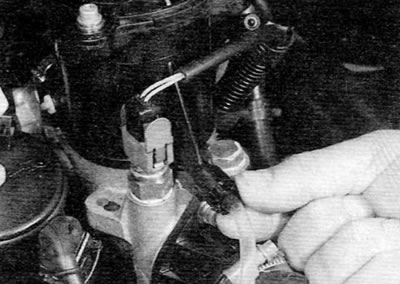
Pic. 4.3. Opening the fuel filter drain plug (XUD series motors)
4. Dispose of drained fuel properly.
5. Start the engine. If you have problems, fill the fuel system (see chapter 4B).
Engines 1.9 l DW series
6. Release the fasteners on the right side and on the top plane of the engine cover, and then remove the cover, being careful not to fall out of the corresponding rubber supports (pic. 4.6, a-c).
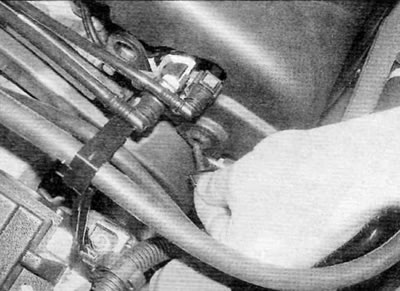
Pic. 4.6, a. On 1.9L DW series engines, remove the clips on the right side...
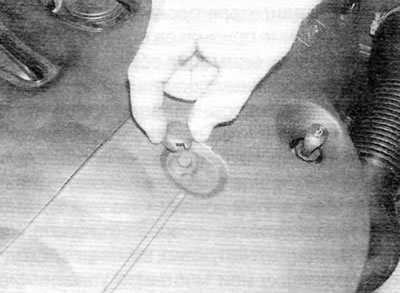
Pic. 4.6b....and on the top plane of the engine cover...
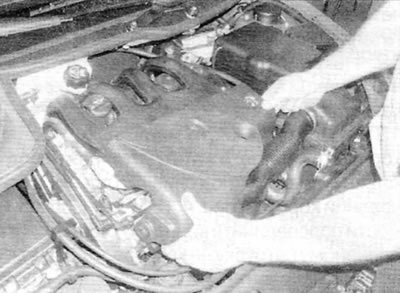
Pic. 4.6, c....and then remove the cover
7. Wipe clean the outside of the fuel filter housing, and then place a suitable container under the drain plug at the base of the housing (pic. 4.7). If necessary, connect a short piece of hose to the drain on the housing so that the fuel flow can be directed into a container (on some models, the hose can be installed at the factory).
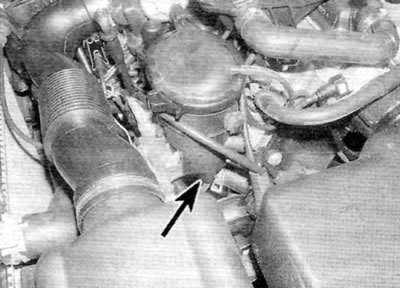
Pic. 4.7. Fuel filter drain plug location (engines 1.9 l DW series)
8. Open the drain plug by turning it counterclockwise. Operate the booster pump on the side of the filter housing to initiate the draining of fuel and condensate. Continue until clean fuel comes out of the hose. Close the drain plug and tighten it securely.
9. Dispose of drained fuel properly.
10. Install the engine cover and start the engine. If you have problems, fill the fuel system (see chapter 4B).
Engines 2.0 l
Warning. Be sure to observe the prescribed intervals for draining condensate from the fuel filter. The high pressure fuel injection system is particularly susceptible to the presence of water in the fuel, as this can cause the injectors and/or the high pressure fuel pump to seize. As a result, the destruction of the engine occurs or due to «blowtorch effect», when the injectors are stuck in the open position, or due to a broken timing belt due to pump jamming.
Note. After each drain procedure, be sure to replace the drain plug and the corresponding O-ring. Finally, fill the fuel system (see chapter 4B) and check for signs of leakage in the drain plug after starting the engine.
11. Release the latches by turning them a quarter of a turn and remove the engine cover (pic. 4.11, a, b).
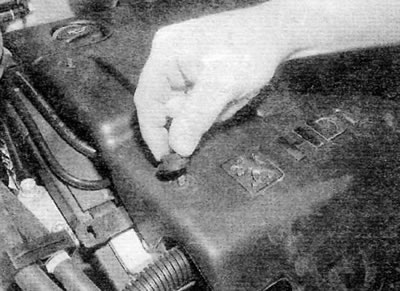
Pic. 4.11, a. Release the latches by turning them a quarter of a turn...
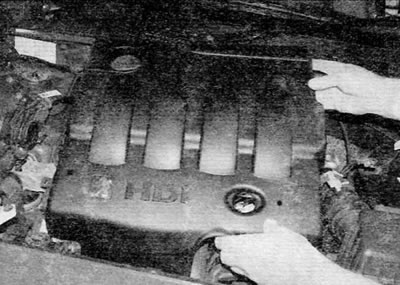
Pic. 4.11b....and remove the engine cover
12. Cover the clutch housing with a rag to protect it from escaping fuel.
13. Wipe clean the outside of the filter housing, and then place a suitable container under the drain plug at the base of the housing (pic. 4.13). If necessary, connect a short piece of hose to the drain on the housing so that the fuel flow can be directed into a container (on some models, the hose can be installed at the factory).
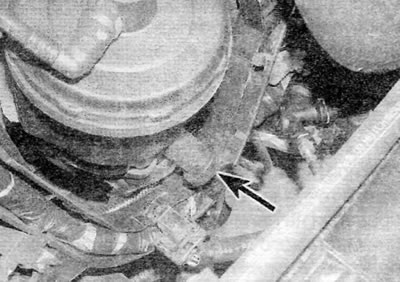
Pic. 4.13. Fuel filter drain plug location (engines 2.0 l)
14. Remove the drain plug and allow the contents of the filter housing to drain into a container. Be aware that it may be necessary to loosen one of the fuel hose fittings on the filter housing cap to allow the fuel to drain. Discard the drain plug and associated O-ring.
15. After emptying the housing, screw in a new drain plug and install the O-ring. Tighten the drain plug and, if necessary, connect the hose barb on the housing cover, making sure it is properly mated.
16. Move the container to the side and remove the hose (if applicable). Wipe up all traces of spilled fuel and remove rags.
17. Dispose of drained fuel properly.
18. Fill the fuel system (see chapter 4B) and install the engine cover.
